Hey there Folks,
Okay, this will eventually get turned into a tech tip of some sorts, but wanted to get a few of these posted ASAP! Mack was nice enough to send me 2 pairs of otherwise trashed carb bodies, 2 of the 78-79, 2 of the 80-81 series. I took a bunch of photos showing the 2 different kinds side by side. But the most FUN part was putting a carb on my BAND SAW and slicing right through one vertically front to back!
The following photos are just a few I've prepared with labels and such. The 1st 3 are 800 x 600 size, the last one is larger ~1150 x 750 to reveal the details a bit better, but our site resizes them to fit into the web page view, remember you can click on the image to see the full sized version.
I also did a bunch of poking and prodding, blowing thru passages and such to determine the pathways, and was actually came up with a few surprises!!!
Darnit, I just realized that I made a mistake in my labelling of the photo that shows the INLET ports view....I'll fix it and then I'll post it later.
Anyways, here's the SPLIT VIEW. I tried to outline the Fuel and Air pathways with RED and BLUE to more easily differentiate them.
The Large Choke/Enrichener port is a dual function port. When the Choke is pulled, it routes fuel from the Bowl up and thru the port, but when the Choke is closed, that port is involved in the air flow for the vac. slide!
The other interesting things are, note the MAIN JET Air port is in the emulsion tube tunnel up near the carb throat. However, the Pilot Jet Air inlet is AFTER the Pilot Jet in the pilot jet circuit. What's also interesting is that the 3 little ports in the top of the carb throat are positioned BEFORE the butterfly valve. The Pilot SCREW is after the butterfly. But also the pilot screw is controlling both AIR and FUEL since the Pilot circuit fuel is being mixed with air just after the Pilot Jet, and way before the Pilot screw. So it appears that it does NOT just adjust FUEL alone, but fuel and air!
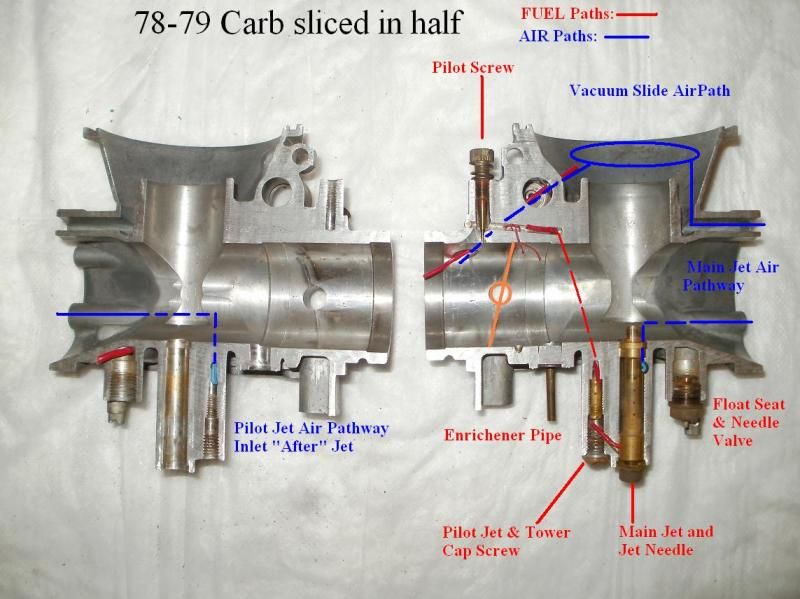
Anyways, more to come, but thought folks would find this interesting!
T.C.
Okay, this will eventually get turned into a tech tip of some sorts, but wanted to get a few of these posted ASAP! Mack was nice enough to send me 2 pairs of otherwise trashed carb bodies, 2 of the 78-79, 2 of the 80-81 series. I took a bunch of photos showing the 2 different kinds side by side. But the most FUN part was putting a carb on my BAND SAW and slicing right through one vertically front to back!

The following photos are just a few I've prepared with labels and such. The 1st 3 are 800 x 600 size, the last one is larger ~1150 x 750 to reveal the details a bit better, but our site resizes them to fit into the web page view, remember you can click on the image to see the full sized version.
I also did a bunch of poking and prodding, blowing thru passages and such to determine the pathways, and was actually came up with a few surprises!!!
Darnit, I just realized that I made a mistake in my labelling of the photo that shows the INLET ports view....I'll fix it and then I'll post it later.
Anyways, here's the SPLIT VIEW. I tried to outline the Fuel and Air pathways with RED and BLUE to more easily differentiate them.
The Large Choke/Enrichener port is a dual function port. When the Choke is pulled, it routes fuel from the Bowl up and thru the port, but when the Choke is closed, that port is involved in the air flow for the vac. slide!
The other interesting things are, note the MAIN JET Air port is in the emulsion tube tunnel up near the carb throat. However, the Pilot Jet Air inlet is AFTER the Pilot Jet in the pilot jet circuit. What's also interesting is that the 3 little ports in the top of the carb throat are positioned BEFORE the butterfly valve. The Pilot SCREW is after the butterfly. But also the pilot screw is controlling both AIR and FUEL since the Pilot circuit fuel is being mixed with air just after the Pilot Jet, and way before the Pilot screw. So it appears that it does NOT just adjust FUEL alone, but fuel and air!

Anyways, more to come, but thought folks would find this interesting!
T.C.







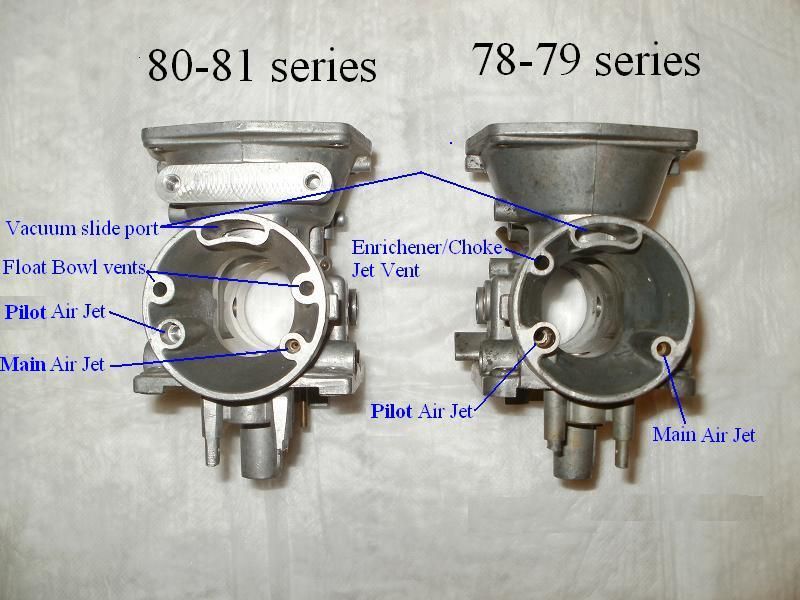
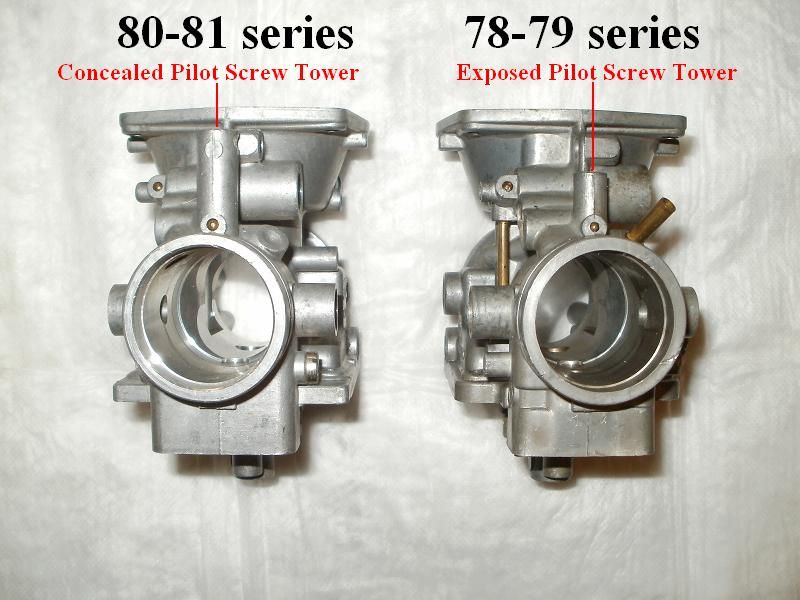
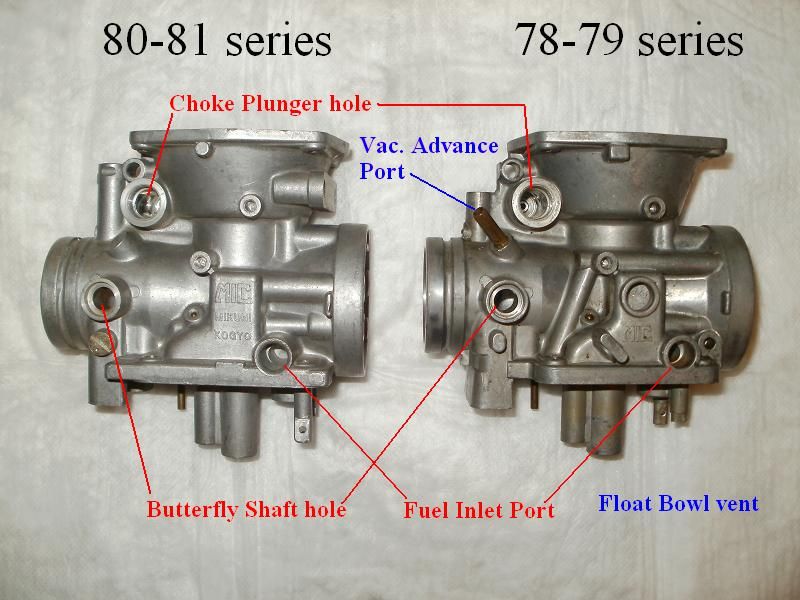
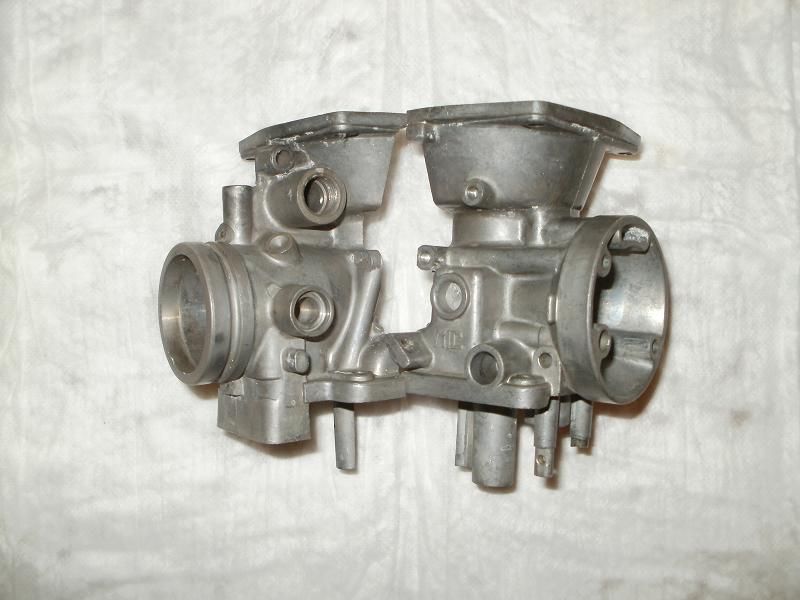
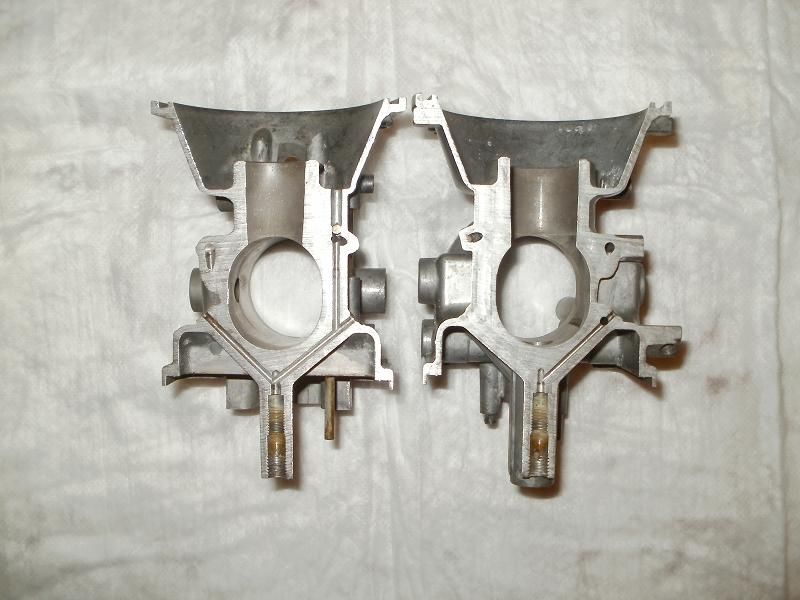
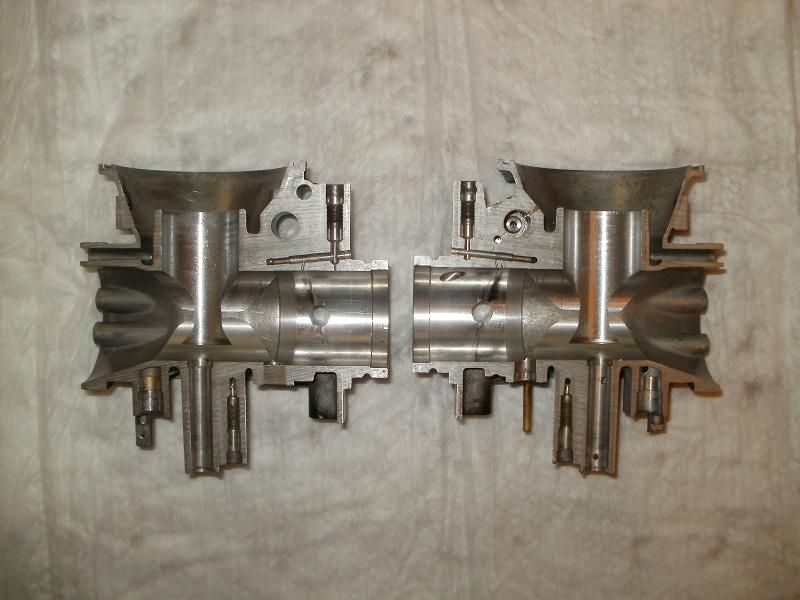
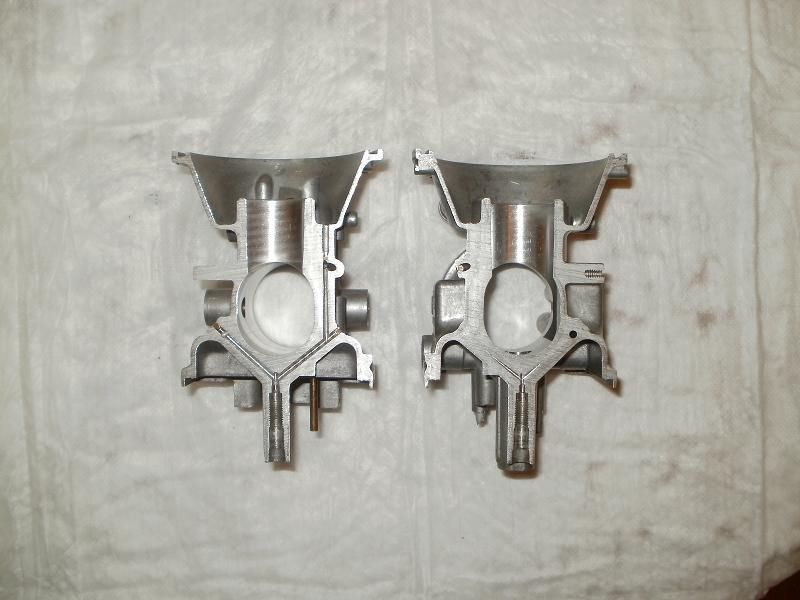
Comment